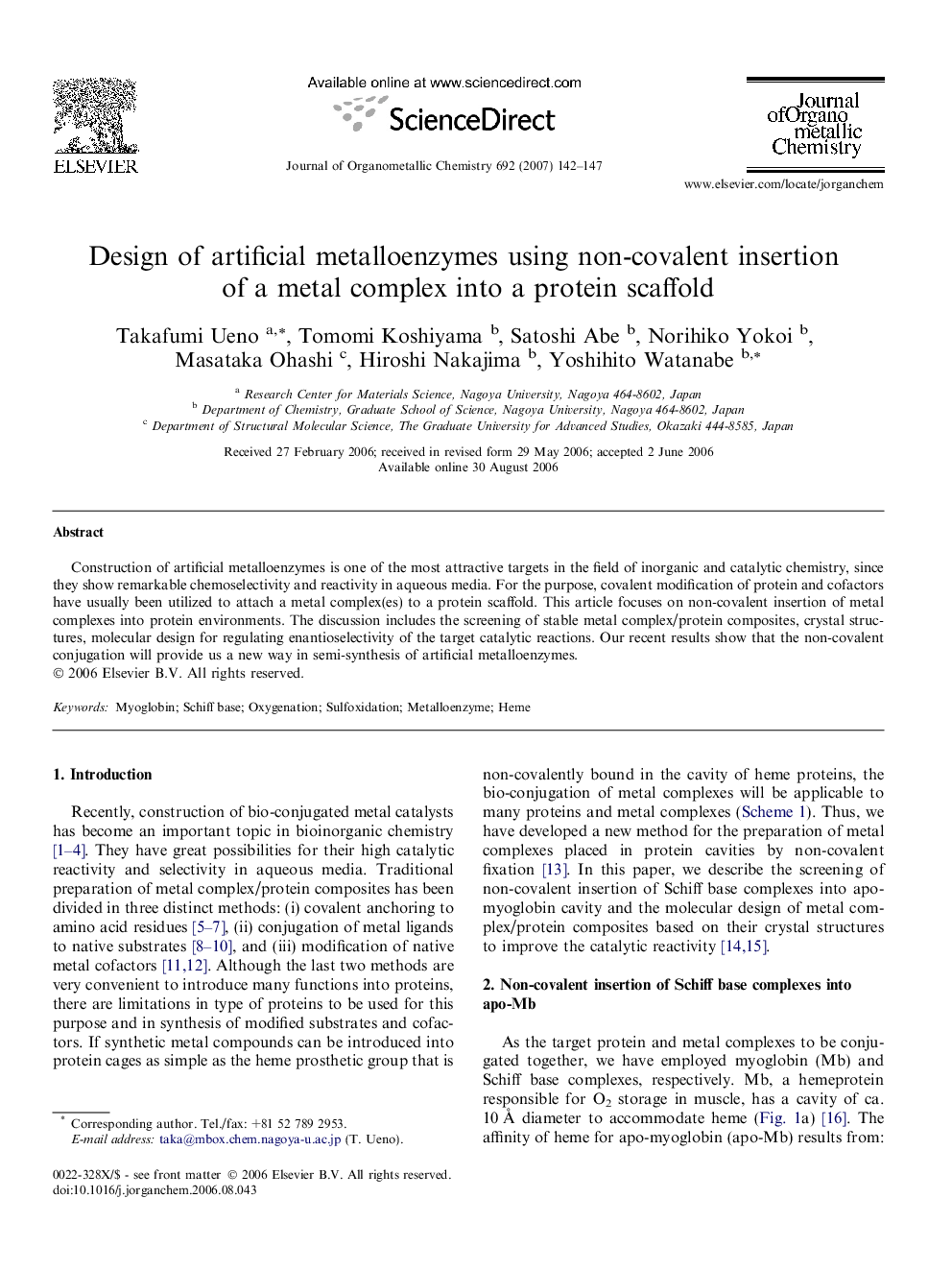| Article ID | Journal | Published Year | Pages | File Type |
|---|---|---|---|---|
| 1328301 | Journal of Organometallic Chemistry | 2007 | 6 Pages |
Construction of artificial metalloenzymes is one of the most attractive targets in the field of inorganic and catalytic chemistry, since they show remarkable chemoselectivity and reactivity in aqueous media. For the purpose, covalent modification of protein and cofactors have usually been utilized to attach a metal complex(es) to a protein scaffold. This article focuses on non-covalent insertion of metal complexes into protein environments. The discussion includes the screening of stable metal complex/protein composites, crystal structures, molecular design for regulating enantioselectivity of the target catalytic reactions. Our recent results show that the non-covalent conjugation will provide us a new way in semi-synthesis of artificial metalloenzymes.
Graphical abstractArtificial metalloenzymes were constructed by non-covalent insertion of a Schiff base complex into an apo-myoglobin cavity. The catalytic reactivity can be improved by molecular design of the composites based on their crystal structures.Figure optionsDownload full-size imageDownload as PowerPoint slide
